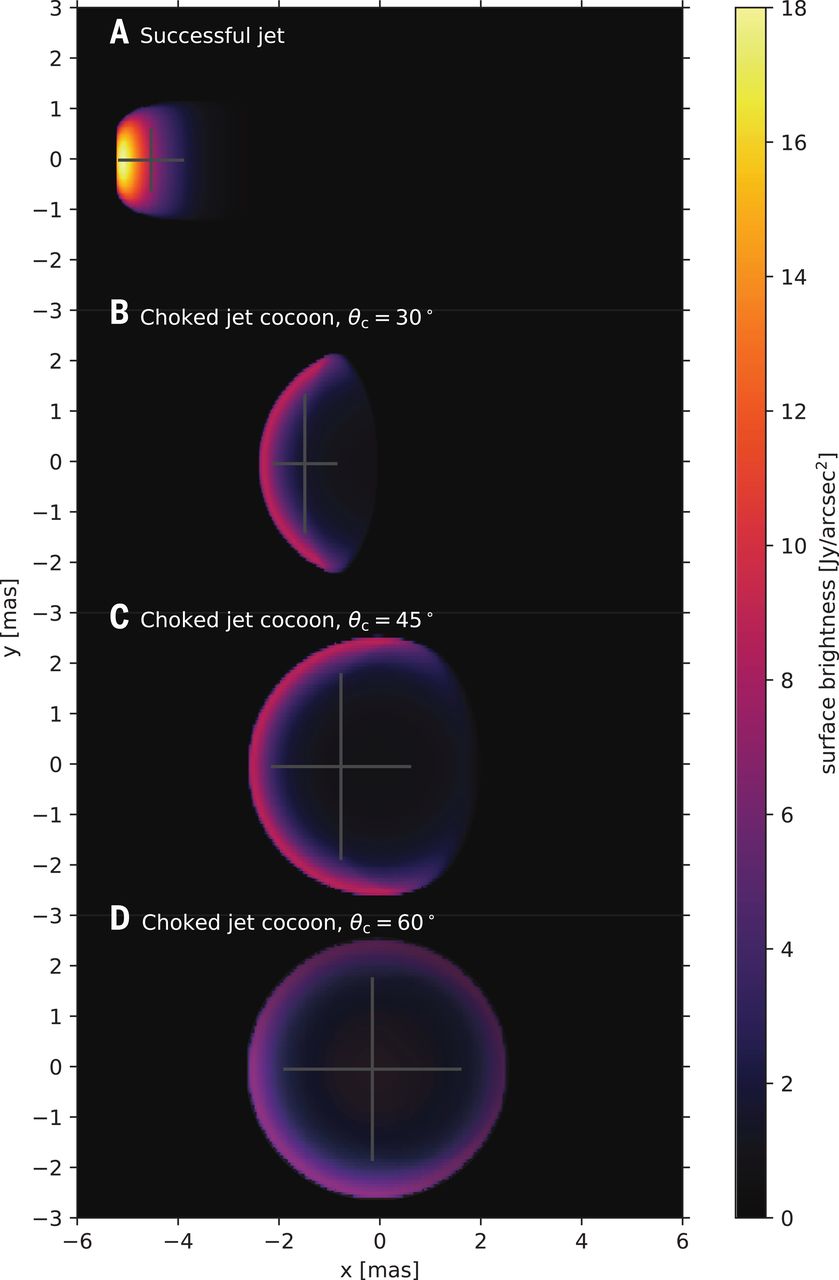The gravitational wave event GW170817 in August 2017 was the first binary neutron star merger event discovered so far, and its counterpart was detected in subsequent observations at almost all electromagnetic bands, which announced the arrival of the multi-messenger astronomy era.
Recently, Science published the latest global Very Long Baseline Interferometry (VLBI) observations, that is, the radio jet was detected in the electromagnetic counterpart of the binary neutron stars merger. Researchers from the Xinjiang Astronomical Observatory and the Chinese VLBI Network participated in the joint research together and played an important role. Dr. Ghirlanda of the National Institute of Astrophysics in Italy, in coordination with researchers from Europe, China and Australia, conducted the largest 5 GHz global VLBI observation in March 2018.
The neutron star merge process will trigger a gamma ray burst. The ejecta interact with the interstellar medium and produce afterglows from the X-ray to the radio band, with a "cocoon" wrapped around the merger.
Monitoring of the electromagnetic afterglow showed that it gradually darkened after its continuous slow brightening.
The theoretical model considers this to be caused by the formed jet in the merger. The structured jet has good collimation, can penetrate the cocoon and radiate to the external space, and thus is to be observed; and the choked jet is not well collimated, with a larger opening angle, and it is constrained in the cocoon which can only be pushed to expand.
These two models cannot be simply distinguished from light curve observations and require ultra-high resolution from radio interferometry observations to identify them.
This joint observation has used almost all VLBI arrays at centimeter band on five continents, including a total of 33 telescopes from EVN in Europe, VLBA in US, KVAZAR in Russia, CVN in China and LBA in Australia.
The resolution of the global VLBI observation data reaches 1.5 milli-arcsecond in the east-west direction and 3.0 milli-arcseconds in the north-south direction, which imposes the strongest constraints on the size of the radio source, and it detects the jet flux of 40 micro-Jansky per beam at the 5-sigma level, which confirmed the structured jet model.
The Nanshan 26-meter telescope of the Xinjiang Astronomical Observatory is an important relay node for the EVN baselines to extend eastward, which plays a crucial role in the high-resolution of the observation in the east-west direction.
The 65-meter telescope in Shanghai and the 40-meter telescope in Kunming, together with the LBA in Australia have also provided effective filling of the uv coverage in the north-south direction, which has improved the mapping quality.
The results of this research will continue to stimulate the research interest of radio astronomers on gravitational wave electromagnetic counterparts.
The global VLBI observation will also continue to play a role in the high-resolution observation of the radio jets in mergers, providing more observables for in-depth understanding of gravitational wave events, and thisinternational cooperation model of globe-scale coordination will prevail in future major astronomical observations.

Predicted source images for our four models. (Image by XAO)





